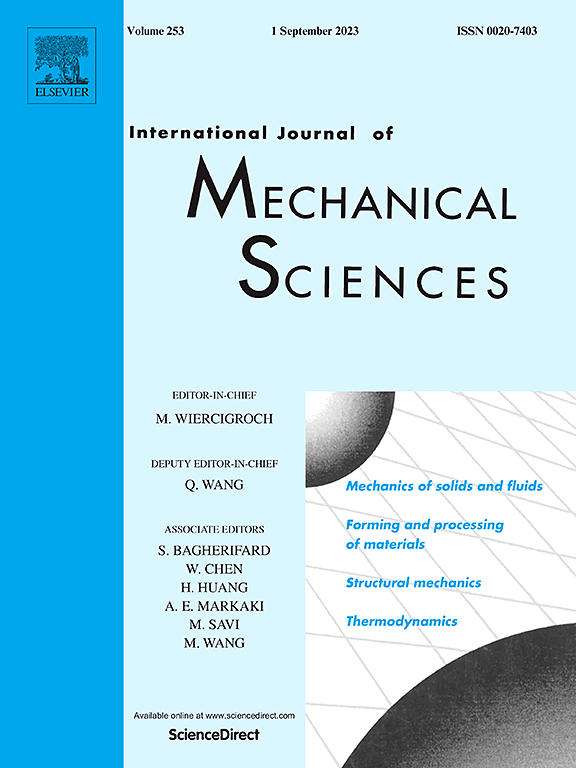Computationally guided composition optimization of Ni50–xFe25Co25Cux for additive manufacturing
IF 7.1
1区 工程技术
Q1 ENGINEERING, MECHANICAL
International Journal of Mechanical Sciences
Pub Date : 2025-03-15
DOI:10.1016/j.ijmecsci.2025.110151
引用次数: 0
Abstract
Additive manufacturing has emerged as a prominent fabrication technology but is hindered by the limited portfolio of printable alloys. Herein, a combination of molecular dynamics simulations, thermodynamic modeling, and high-throughput experiments is used to address this limitation by screening Ni50–xFe25Co25Cux high-entropy alloys for promising candidate materials. The thermodynamic simulations indicate that the printability can be enhanced by increasing the Ni content at the expense of Cu by narrowing the solidification temperature range and suppressing the formation of additional phases, while the atomistic simulations show that the composition is prone to forming Cu-rich atomic-clusters. Based on these insights, crack-free samples were printed using high-throughput laser powder bed fusion. A trend of increasing yield strength with a higher Cu content was observed, which could not be explained by the microstructural features. Instead, atomistic simulations suggest that the trend is due to the formation of Fe–Cu clusters forming at the grain boundary, which increases the resistance to dislocation slip. The findings present valuable design guidelines for developing computational frameworks to design printable alloys, while highlighting the intertwined nature of chemical composition, atomic ordering, and stacking fault energy.

求助全文
约1分钟内获得全文
求助全文
来源期刊

International Journal of Mechanical Sciences
工程技术-工程:机械
CiteScore
12.80
自引率
17.80%
发文量
769
审稿时长
19 days
期刊介绍:
The International Journal of Mechanical Sciences (IJMS) serves as a global platform for the publication and dissemination of original research that contributes to a deeper scientific understanding of the fundamental disciplines within mechanical, civil, and material engineering.
The primary focus of IJMS is to showcase innovative and ground-breaking work that utilizes analytical and computational modeling techniques, such as Finite Element Method (FEM), Boundary Element Method (BEM), and mesh-free methods, among others. These modeling methods are applied to diverse fields including rigid-body mechanics (e.g., dynamics, vibration, stability), structural mechanics, metal forming, advanced materials (e.g., metals, composites, cellular, smart) behavior and applications, impact mechanics, strain localization, and other nonlinear effects (e.g., large deflections, plasticity, fracture).
Additionally, IJMS covers the realms of fluid mechanics (both external and internal flows), tribology, thermodynamics, and materials processing. These subjects collectively form the core of the journal's content.
In summary, IJMS provides a prestigious platform for researchers to present their original contributions, shedding light on analytical and computational modeling methods in various areas of mechanical engineering, as well as exploring the behavior and application of advanced materials, fluid mechanics, thermodynamics, and materials processing.
 求助内容:
求助内容: 应助结果提醒方式:
应助结果提醒方式:


